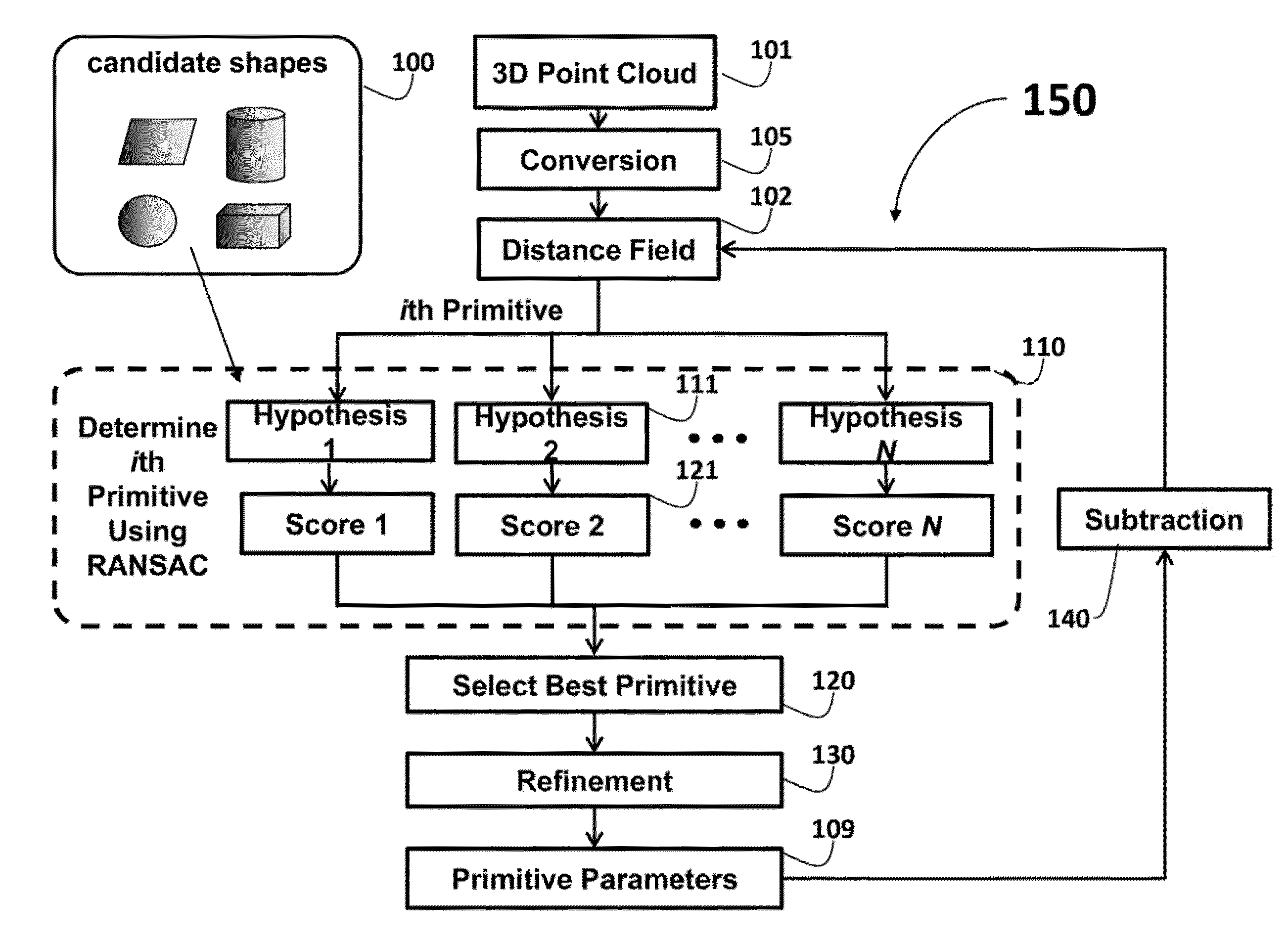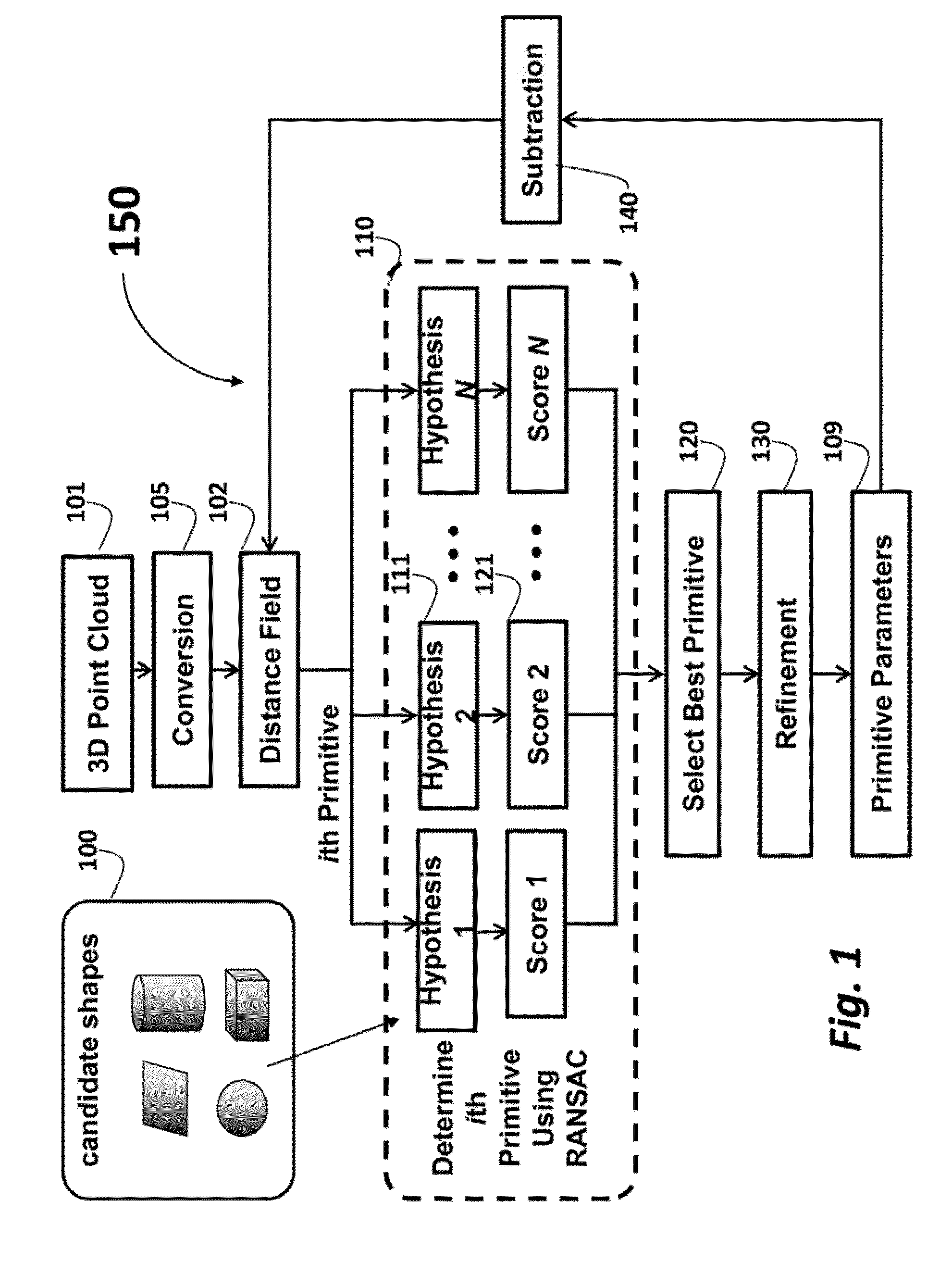Method for Fitting Primitive Shapes to 3D Point Clouds Using Distance Fields
a distance field and primitive shape technology, applied in the field of processing threedimensional (3d) data, can solve the problems of time-consuming, substantial memories and computational resources, and the difficulty of storing and processing 3d point clouds, and achieve the effect of fast score computation and efficient refinement of hypothesized shape parameters
- Summary
- Abstract
- Description
- Claims
- Application Information
AI Technical Summary
Benefits of technology
Problems solved by technology
Method used
Image
Examples
Embodiment Construction
[0009]As shown in FIG. 1, the embodiments of the invention provide a method for fitting primitive shapes to 3D point clouds using distance fields. Input to the method is a 3D point cloud 101. The 3D point cloud can be obtained as a scan of a 3D sensor, or by registering multiple scans of the 3D sensor or scans from several different 3D sensors.
[0010]The 3D point cloud is converted 105 to a distance field 102. The distance field is used in a RANSAC-based primitive shape fitting process 110, where a set of two or more candidate shapes 100 are hypothesized 111 by using a minimal number of points required to determine parameters of a corresponding shape. A score 121 is determined for each shape candidate.
[0011]The method selects 120 the best candidate primitive shape that has a minimal score among the candidates. Optionally, the parameters of the best primitive shape can be refined 130 using a gradient-decent procedure. To determine a set of primitive shapes in a point cloud, we iterate...
PUM
 Login to View More
Login to View More Abstract
Description
Claims
Application Information
 Login to View More
Login to View More - R&D
- Intellectual Property
- Life Sciences
- Materials
- Tech Scout
- Unparalleled Data Quality
- Higher Quality Content
- 60% Fewer Hallucinations
Browse by: Latest US Patents, China's latest patents, Technical Efficacy Thesaurus, Application Domain, Technology Topic, Popular Technical Reports.
© 2025 PatSnap. All rights reserved.Legal|Privacy policy|Modern Slavery Act Transparency Statement|Sitemap|About US| Contact US: help@patsnap.com



